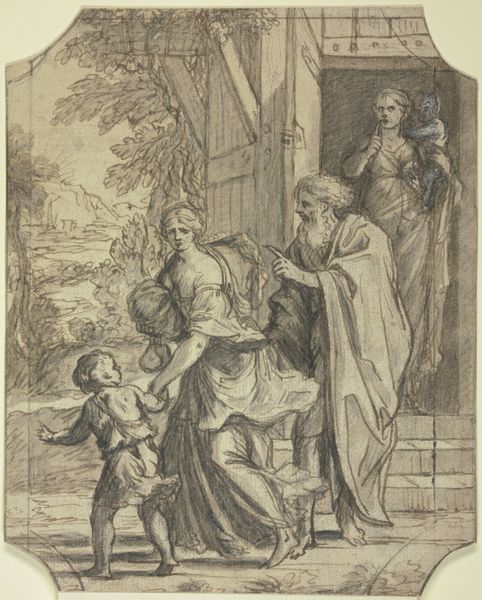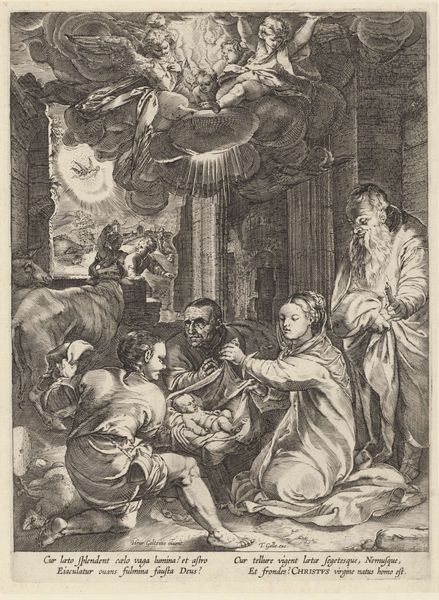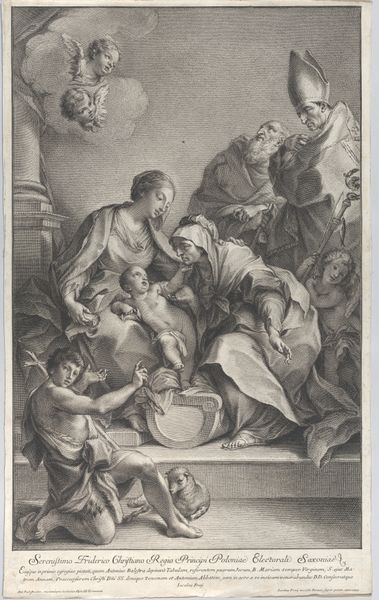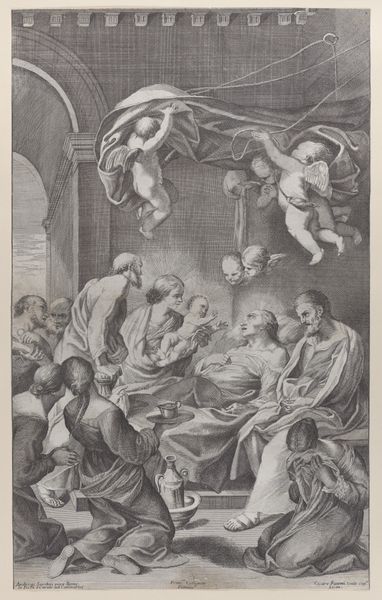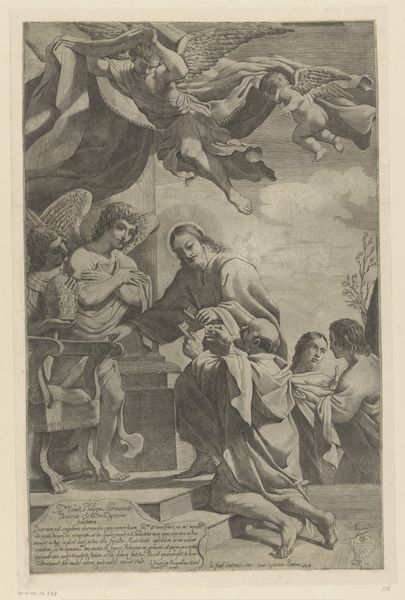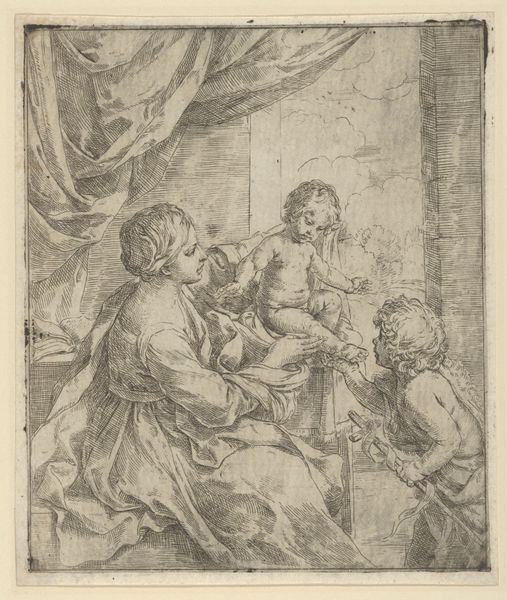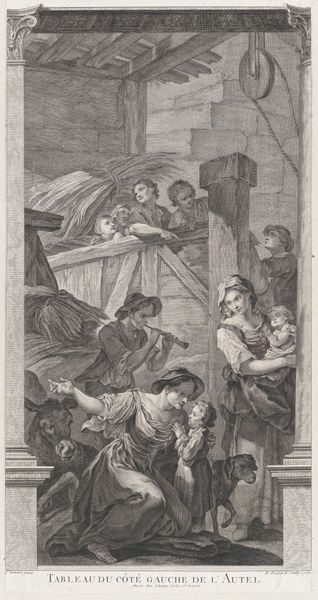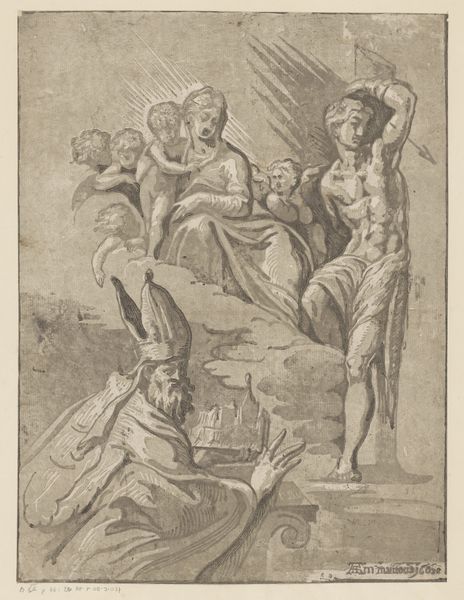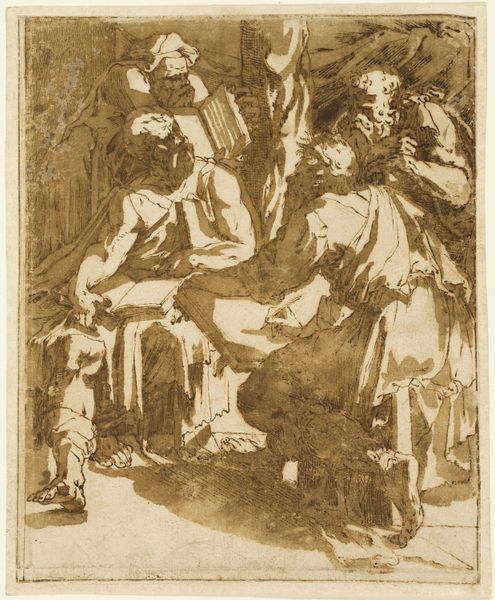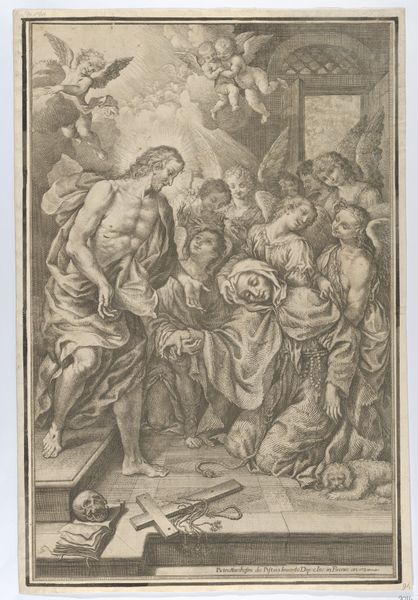
Maria med Jesus-barnet, Johannes Døberen, Elisabeth, Joseph og Zakarias 1525 - 1600
0:00
0:00
drawing, ink, pen
#
drawing
#
narrative-art
#
figuration
#
11_renaissance
#
ink
#
pencil drawing
#
pen
#
academic-art
#
italian-renaissance
Dimensions: 416 mm (height) x 290 mm (width) (None)
Editor: Here we have an intriguing drawing, "Maria med Jesus-barnet, Johannes Døberen, Elisabeth, Joseph og Zakarias" or "Mary with the Christ Child, John the Baptist, Elizabeth, Joseph and Zacharias." Created sometime between 1525 and 1600 by an anonymous artist using pen, ink, and other drawing techniques, it depicts a rather tender scene. But those sharp lines also give it a feeling of… intensity? What stands out to you? Curator: Intensity, yes! And something else… this drawing feels like a whispered secret. I find it curious how the artist captures such a monumental moment with such intimacy, almost like we've stumbled upon a private scene. Notice the figures huddled together; even the light seems to conspire, sneaking in from that high window, focusing all our attention on the Madonna and Child. There’s a rawness, a lack of polish, that breathes so much life into it. It’s less about perfection and more about the beating heart of the moment, wouldn’t you say? Editor: Definitely. It's less idealized than other Renaissance depictions I've seen. Like the figure of John the Baptist – he looks like an ordinary, scruffy kid. Curator: Exactly! He's not some cherubic ideal but a child of his time, his earthly connection emphasized through his interaction with the lamb and Joseph looking like someone overheard saying something they shouldn’t. The artist is capturing the everyday, that sense of life happening, amidst this monumental, miraculous moment. The humanity amidst the divine… do you think it resonates with you? Does it shift how we see this oft-told story? Editor: I do see what you mean. It makes the story more relatable, somehow, more human. I came looking for religious symbolism, but I found humanity instead. Curator: And perhaps, that's the greatest symbolism of all. To find the divine in the human experience, as whispered in ink from centuries ago.
Comments
No comments
Be the first to comment and join the conversation on the ultimate creative platform.
